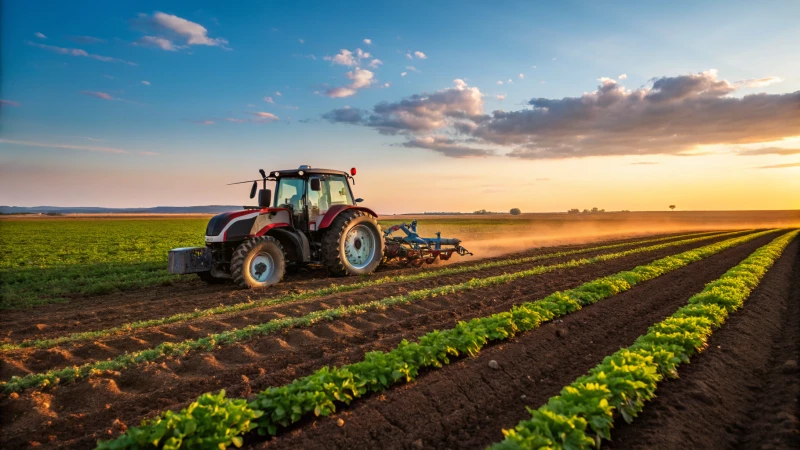
Imagine waking up at dawn to the hum of a tractor, ready to transform fields into fertile ground.
Farm tractors have revolutionized modern agriculture by boosting efficiency, cutting down on labor costs, and incorporating cutting-edge technology, all while making farming more sustainable and productive.
Once upon a time, I remember watching my grandfather labor tirelessly on his farm, every task a testament to sheer will and endurance. Fast forward a few decades, and it feels like tractors have become the true workhorses of the fields. They not only handle larger areas with ease but also run day and night thanks to advancements like GPS and lighting systems. It's incredible how these machines have redefined what’s possible in farming, from precision tillage that protects soil health to variable rate technology that optimizes every drop of fertilizer. The impact goes far beyond just saving time—it's about nurturing the land more sustainably and effectively than ever before.
Farm tractors reduce labor costs significantly.True
Tractors automate tasks, reducing the need for manual labor in farming.
Tractors have no impact on soil management.False
Tractors help in precise soil preparation, improving management practices.
What are the key functions of a farm tractor?
Ever wondered how tractors have become the backbone of modern farming?
A farm tractor is vital in agriculture, handling tasks like plowing, planting, tilling, spraying, and harvesting efficiently. It boosts productivity, cuts labor costs, and integrates technology for sustainable farming practices.
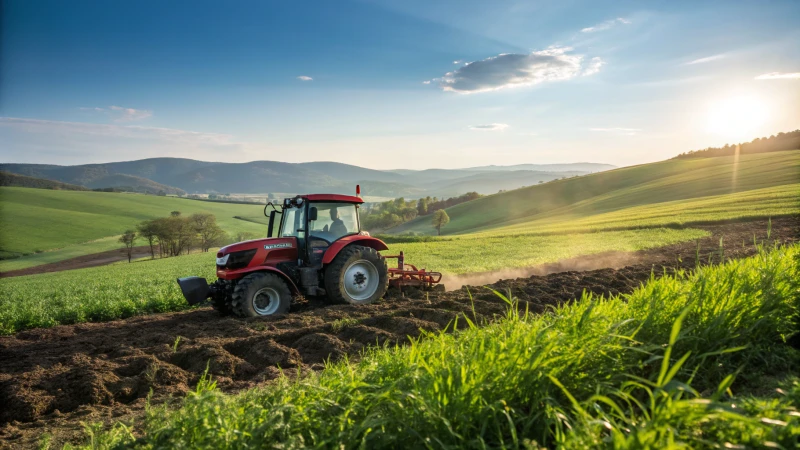
Increased Efficiency and Productivity
I remember my first experience with a tractor on our family farm; it was a game-changer. Gone were the days of back-breaking manual labor. Tractors can perform tasks like plowing1, planting, and harvesting with a speed that amazed me. Now, with modern GPS systems, these machines operate around the clock, ensuring we meet our tight schedules.
| Function | Benefit |
|---|---|
| Plowing | Prepares soil for planting |
| Tilling | Enhances soil aeration |
| Seeding | Ensures precise seed placement |
Versatility in Farming Tasks
The adaptability of tractors always impresses me. With a simple switch of attachments, I can go from spraying fertilizers2 to harvesting crops. Each task is handled with ease thanks to customizable features like various horsepower levels and sophisticated hydraulic systems.
Improved Soil Management
I’ve learned that managing soil is crucial for sustainable farming. Tractors help with this by reducing soil compaction using large, low-pressure tires. Precision tillage, enabled by GPS technology, ensures our soil isn’t overworked, thus preventing erosion and maintaining its health.
Labor Cost Reduction
Switching to tractors has significantly cut down on labor costs for us. It's incredible how much work one machine can do compared to a team of laborers. Plus, with power steering and air-conditioned cabins, operating a tractor is more comfortable than ever before.
Precision Agriculture and Technology Integration
Modern tractors have transformed farming through technology integration. With yield monitoring3 sensors and Variable Rate Technology (VRT), I can optimize resource application effectively. Auto-steering capabilities further enhance accuracy during field operations.
Sustainable Farming Practices
Tractors also play a key role in sustainable farming by ensuring efficient resource use. With fuel-efficient models reducing environmental impact and features like cover crop management aiding in soil health maintenance, they are essential to our sustainable practices.
Tractors reduce soil compaction with low-pressure tires.True
Tractors use large, low-pressure tires to minimize soil compaction.
Farm tractors cannot operate 24/7 due to efficiency limits.False
With GPS systems, modern tractors can efficiently operate 24/7.
How do tractors contribute to sustainable farming practices?
Ever wondered how tractors are revolutionizing sustainable farming? Let me take you on a journey where horsepower meets eco-consciousness, transforming agriculture one field at a time.
Tractors play a vital role in sustainable farming by boosting resource efficiency, cutting down environmental impact, and using technology like GPS and precision tools. This smart approach enhances land use, reduces waste, and supports ecological harmony.
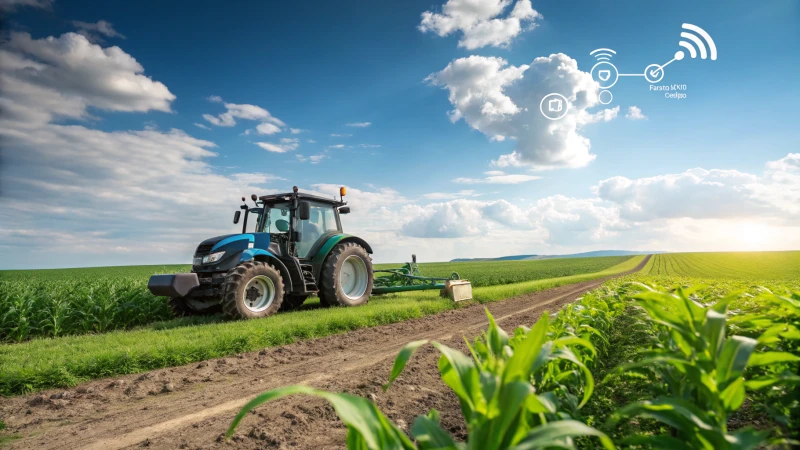
Efficiency and Productivity
Tractors drastically reduce the time needed for critical farming tasks. Watching my grandfather plow the fields by hand was humbling, but now, with modern tractors, those endless hours of toil have transformed into swift operations. With modern attachments, they can plow, plant, and harvest swiftly, enhancing productivity4. This means less fuel consumption per acre, supporting more sustainable operations.
Versatility in Tasks
I remember the first time I saw a tractor equipped with an array of attachments—it was like a Swiss army knife of farming. Equipped with various implements, tractors can perform multiple functions—from tilling soil to spraying pesticides—ensuring precision5 and reducing resource wastage. This versatility helps farmers manage farms with minimal environmental footprint.
| Task | Benefit |
|---|---|
| Plowing | Prepares soil with minimal compaction |
| Seeding | Ensures even distribution |
| Spraying | Reduces chemical overuse |
Technological Integration
Modern tractors are like something out of a sci-fi movie. They integrate technologies like GPS and Variable Rate Technology (VRT), which allow precise input application based on real-time data6. This not only saves resources but also minimizes adverse environmental effects.
- GPS Navigation: Enhances accuracy in field operations.
- Yield Monitoring: Tracks crop performance for better future planning.
Environmental Impact Reduction
Today’s tractors are designed with the environment in mind. New models focus on reducing emissions with fuel-efficient engines. They help comply with environmental regulations while lowering carbon footprints7. Some even incorporate electric powertrains, further promoting sustainability.
- Tier 4 Engines: Lower emissions.
- Electric Models: Reduce fossil fuel dependence.
Soil Health Management
I can still hear my dad’s voice reminding me about the importance of soil health. By using wide tires or tracks, tractors can minimize soil compaction—crucial for maintaining biodiversity and preventing erosion. Advanced precision tillage ensures that soil is neither overworked nor underutilized, preserving its rich nutrients for future harvests through precision tillage8.
Conclusion
Tractors have become indispensable in modern agriculture, continually evolving with technological advancements to support sustainable practices. While their role in sustainable practices continues to evolve with advancing technologies, farmers can leverage these innovations to enhance productivity while prioritizing environmental conservation. Sustainable farming is indeed a delicate balance, but with continued improvements in tractor technologies, it becomes increasingly attainable.
Tractors reduce fuel consumption per acre.True
Modern tractors enhance efficiency, using less fuel for more work.
Electric tractors increase fossil fuel use.False
Electric tractors reduce reliance on fossil fuels, lowering emissions.
How have technological advancements improved tractor efficiency?
Remember the days when farming was all about early mornings and endless manual labor? Well, those days are behind us thanks to incredible advancements in tractor technology.
Tractors have evolved with technologies like GPS, auto-steering, variable rate technology, and enhanced engines, making them more efficient. These innovations help farmers work smarter, not harder, by increasing precision and productivity.

GPS and Auto-Steering Systems
I remember the first time I saw a tractor steering itself across a field. It was both fascinating and a bit unnerving. With GPS and auto-steering, my farm operations became much more precise, eliminating the usual overlaps or missed spots during planting. Farmers can operate tractors efficiently at night9 or in low-visibility conditions, maximizing time spent on the field.
Variable Rate Technology (VRT)
Back when I started farming, applying fertilizers was a guessing game. With Variable Rate Technology, those days of uncertainty are long gone. By analyzing data from different field areas, I can now apply exactly what each patch of land needs, reducing waste and optimizing growth. This personalized approach to farming has improved yields and cut costs dramatically by tailoring approaches to different soil types10.
Enhanced Engine Designs
I used to dread the fuel costs associated with older tractor models. But with recent advancements in engine designs, particularly the Tier 4 engines, I've noticed a significant drop in fuel consumption and emissions. These engines help reduce the carbon footprint11 of farming operations while maintaining powerful performance.
Automation and Robotics
It's hard to believe how far we've come with automation. Watching autonomous tractors plow and seed with such precision is a sight to behold. These machines have minimized human intervention, allowing me to focus on other crucial aspects of the farm while knowing that the fields are being tended to consistently and efficiently under varying conditions.
Precision Farming Tools
Data is everything in farming today. With tools like yield monitors and soil sensors, I can make informed decisions about planting schedules and nutrient application. This level of detail has allowed me to manage resources better and improve crop outcomes season after season.
| Technology | Benefit |
|---|---|
| GPS & Auto-Steering | Accurate field navigation |
| Variable Rate Technology | Optimal input usage |
| Enhanced Engine Designs | Reduced emissions and fuel costs |
| Automation & Robotics | Increased productivity with minimal human intervention |
| Precision Farming Tools | Informed decision-making for resource management |
GPS reduces overlap in tractor fieldwork.True
GPS technology allows precise navigation, minimizing overlaps in field operations.
Variable Rate Technology increases fertilizer waste.False
VRT optimizes input use, reducing waste by applying precise amounts needed.
How do farm tractors reduce labor costs?
Farm tractors have truly transformed the way we work the land, slashing labor costs dramatically. Imagine managing sprawling acres with minimal help and achieving more than ever before!
Farm tractors cut labor costs by automating essential tasks like plowing, seeding, and harvesting, which traditionally required a whole team. This efficiency allows farmers to oversee larger operations, ultimately reducing labor expenses.
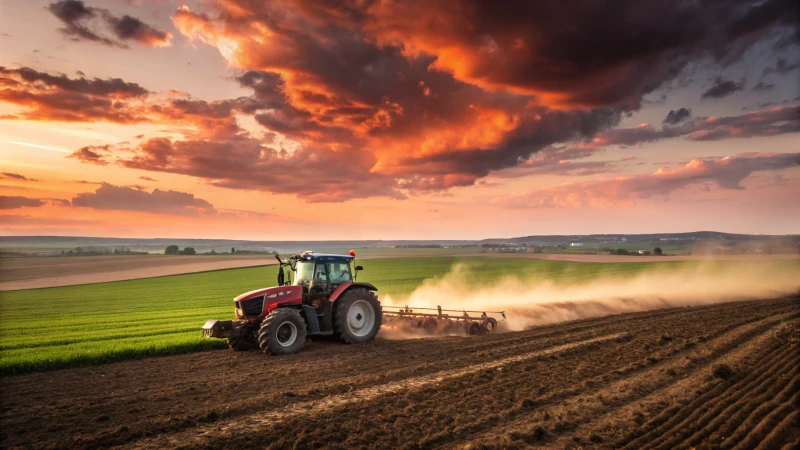
Increased Efficiency and Productivity
You know that satisfying feeling when you finish a big job in record time? That’s exactly what farm tractors bring to the table. They tackle tasks like plowing fields in what feels like a blink of an eye compared to doing it manually. This efficiency not only saves time but also allows us to cultivate more land, boosting both yields and profits. Plus, with modern features like GPS and automated steering, these machines keep working efficiently day and night12, ensuring downtime is kept to a minimum.
Versatility in Farming Tasks
Tractors are the Swiss Army knives of farming. They're not just about plowing; they're equipped to handle a variety of jobs. From tilling to planting and spraying pesticides, one tractor can take on tasks that would otherwise require several different machines or a small army of workers. This versatility means we don’t need to invest in multiple specialized machines, which helps us save significantly on labor costs. Investing in various attachments13 tailored to seasonal needs or specific crops adds another layer of adaptability.
| Task | Traditional Labor | Tractor Efficiency |
|---|---|---|
| Plowing | 5 workers, 8 hours | 1 tractor, 2 hours |
| Planting | 6 workers, 7 hours | 1 tractor, 2 hours |
| Harvesting | 8 workers, 10 hours | 1 tractor, 3 hours |
Reduced Dependence on Manual Labor
By embracing mechanization, I’ve significantly reduced the number of workers needed on my farm. This shift has been a game-changer for our budget. Tractors with comfortable cabins and user-friendly controls make the job less grueling, allowing operators to work longer without getting worn out. Some models even offer precision farming tools14, optimizing resources and labor allocation further.
Precision Agriculture Technologies
Incorporating technology like GPS for accurate field navigation and yield monitoring systems ensures that we use inputs precisely, reducing waste and the need for manual corrections. For example, using Variable Rate Technology15 allows us to apply fertilizers according to specific field data, which not only saves costs but also minimizes environmental impact.
Sustainability and Resource Management
Tractors play a crucial role in sustainable farming by ensuring efficient resource use. They help us apply fertilizers and water precisely, cutting down on waste. Modern, fuel-efficient models also help reduce our carbon footprint while keeping operations cost-effective. By investing in these technologies, we’re setting ourselves up for long-term savings in both labor and environmental management costs. Some models even come with low-emission engines16, making them a responsible choice for forward-thinking farmers.
Tractors can plow fields faster than manual labor.True
Tractors perform tasks quicker, enhancing efficiency and productivity.
Farm tractors increase the need for manual labor.False
Tractors reduce reliance on manual labor by automating tasks.
How do tractors enhance soil management?
Picture a world where farming is not just a chore, but an art of efficiency and sustainability. That's where tractors come in.
Tractors are indispensable in soil management by reducing compaction, enabling precise tillage, and promoting sustainable practices. They empower farmers to maintain soil health effectively, optimizing conditions for crop growth.
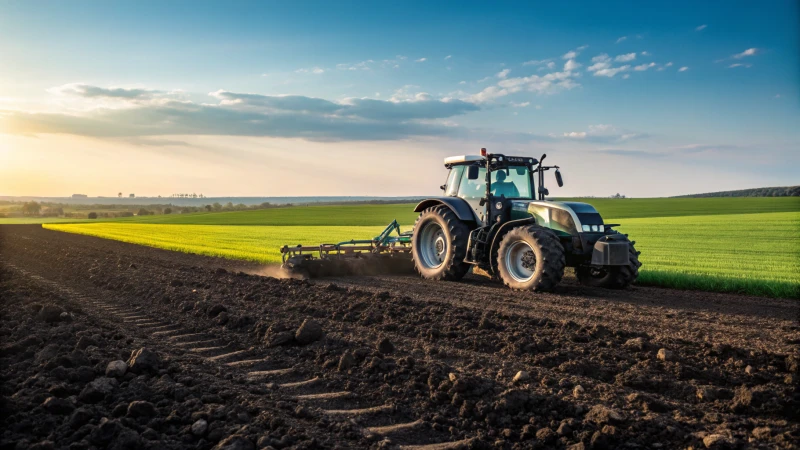
Reducing Soil Compaction
I remember the first time I hopped onto a tractor equipped with those massive, low-pressure tires17—it felt like driving a gentle giant. These machines are designed to tread lightly, minimizing soil compaction that otherwise suffocates roots and stifles plant growth. By reducing this compression, we ensure our soil stays loose and vibrant, ready to nourish every seed we plant.
Precision Tillage
There's something magical about modern tractors and their GPS-guided precision tillage18. It's like playing a video game but with real-world stakes. This technology allows us to till our fields with laser accuracy, avoiding the pitfalls of over-tilling that can strip the land bare. Instead, we preserve the soil's nutrients and integrity, crafting the perfect canvas for our crops.
Supporting Sustainable Practices
Sustainability isn't just a buzzword for me—it's a way of life. Tractors today are equipped with Variable Rate Technology (VRT), which feels like having a green thumb on autopilot. With VRT, we can tailor our use of fertilizers and pesticides, applying them only where needed and reducing waste. It's about striking the balance between productivity and care for our planet.
Example of a Sustainable Practice Table
| Practice | Benefit |
|---|---|
| Reduced Soil Compaction | Promotes healthier root growth |
| Precision Tillage | Prevents soil erosion |
| Variable Rate Technology | Reduces fertilizer waste |
Integrating tractors with modern farming systems19 is like merging tradition with innovation. By incorporating cover crops, we boost organic matter and shield our precious soil from erosion. These practices are the heartbeat of keeping our lands fertile and productive year after year.
Tractors with large tires reduce soil compaction.True
Large, low-pressure tires distribute weight evenly, minimizing compaction.
Precision tillage increases soil erosion risks.False
Precision tillage prevents over-tillage, thus reducing erosion risk.
How have tractors evolved to meet modern agricultural needs?
Imagine a world where tractors aren't just machines, but trusty companions in the field.
Tractors have transformed by integrating cutting-edge technologies such as GPS and automated steering, enhancing efficiency and reducing labor in farming. These advancements support sustainable practices and make modern agriculture more productive.

From Steam to Diesel: The Early Evolution
Let me take you back to when I first learned about steam-powered tractors. They were like the giants of the past, puffing along the fields, a sight to behold. But they were soon outpaced by the more nimble and affordable internal combustion engines20. This shift was like switching from a slow dial-up to high-speed internet—suddenly, everything was faster and more accessible, allowing more farmers, including those in my community, to get their hands on these machines.
Technological Advancements in Modern Tractors
Fast forward to today, and tractors are akin to tech-savvy friends who never miss a beat. I remember the first time I saw a tractor with GPS navigation and automated steering. It was mesmerizing—like watching a self-driving car in action but on a farm. This technology not only minimizes waste but also ensures that every seed is planted with precision, just as I'd want it if I were out there working the land myself.
Table: Key Technological Features
| Feature | Benefit |
|---|---|
| GPS Navigation | Reduces overlaps, saving time and resources |
| Auto-Steering | Enhances accuracy and efficiency |
| Yield Monitoring | Allows real-time crop analysis |
Sustainability through Innovation
As someone passionate about sustainability, I've seen how modern tractors embody eco-friendly innovation. With fuel-efficient engines and technologies like Variable Rate Technology21, these machines help reduce emissions and environmental impact. It's like having a partner who's as committed to protecting the planet as I am.
Enhancing Productivity and Reducing Labor Costs
Today's tractors are workhorses with the soul of multitaskers. With various attachments, they can plow, plant, and harvest without breaking a sweat. When I think of the labor saved, I can't help but appreciate the comfort of air-conditioned cabins that make long days in the field bearable.
Customization for Diverse Farming Needs
I’ve always admired how modern tractors can be tailored to fit any farm's needs. Whether it's a small plot needing delicate tilling or vast fields requiring robust horsepower, these tractors adapt. It's like having a Swiss Army knife on wheels, ready for any challenge that comes its way.
Modern tractors use GPS technology.True
GPS technology in tractors helps reduce overlaps and increase efficiency.
Steam-powered tractors are still widely used today.False
Steam-powered tractors have been replaced by more efficient engines.
Conclusion
Farm tractors revolutionize agriculture by enhancing efficiency, reducing labor costs, and integrating advanced technologies for sustainable practices, ultimately transforming farming into a more productive and eco-friendly endeavor.
-
Learn how plowing prepares the soil, improving aeration and nutrient distribution for optimal plant growth. ↩
-
Understand how tractors efficiently apply fertilizers to fields, ensuring even distribution and optimal plant nutrition. ↩
-
Explore how yield monitoring helps farmers track crop performance, enhancing decision-making for future planting seasons. ↩
-
Discover how tractors streamline farming processes, boosting productivity and sustainability. ↩
-
Learn how versatile tractors help reduce environmental impact through efficient farming practices. ↩
-
Understand how GPS integration enhances tractor operations by improving precision and reducing waste. ↩
-
Explore how advanced engine technologies in tractors help lower emissions and support eco-friendly farming. ↩
-
Find out how precision tillage with tractors maintains soil integrity and promotes sustainable farming. ↩
-
Discover how GPS technology enhances farming efficiency by enabling precise operations. ↩
-
Learn how VRT adapts to different field conditions for optimal resource use. ↩
-
Explore how Tier 4 engines contribute to sustainable agriculture. ↩
-
Learn how GPS systems enable tractors to operate efficiently day and night, reducing downtime. ↩
-
Discover which attachments increase tractor versatility and reduce labor needs. ↩
-
Explore how precision tools optimize resource use and lower labor costs. ↩
-
Understand how VRT saves costs by adjusting input applications based on field data. ↩
-
Find out how low-emission engines contribute to sustainability and cost-effectiveness. ↩
-
Learn how specific tire designs minimize soil pressure, preserving soil health. ↩
-
Discover the benefits of GPS technology in enhancing precision farming. ↩
-
Explore how modern systems integrate with tractors to improve sustainability. ↩
-
Explore how internal combustion engines revolutionized tractor design and efficiency. ↩
-
Learn about Variable Rate Technology and its role in sustainable agriculture. ↩



